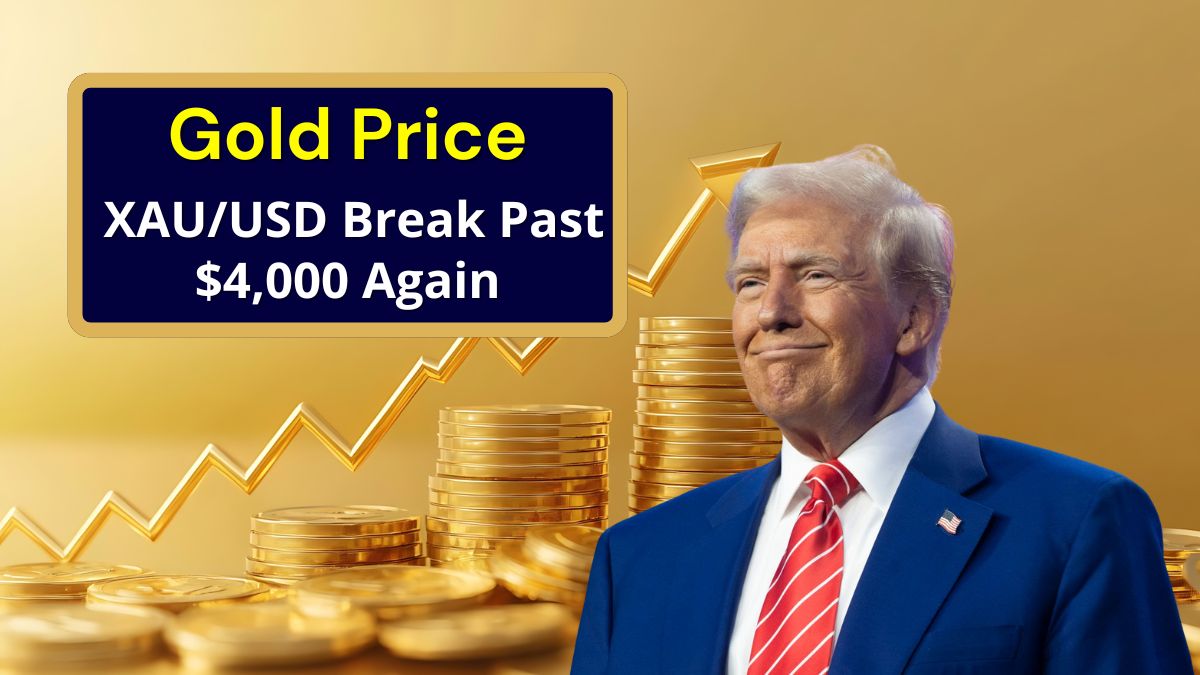If you’ve been following the gold market lately, you probably noticed how close the yellow metal came to hitting yet another record. After touching a lifetime high of $4,059 earlier this week, gold has pulled back slightly — but investors aren’t giving up just yet.
Here’s the thing — despite the brief correction, gold is still finding strong support near $3,960, and traders are watching closely to see if it can climb back above that magic $4,000 mark once again.
Why Gold Prices Are Still Holding Strong
Let’s be honest — gold doesn’t move without a reason. So, what’s behind its resilience?
Right now, markets are feeling a mix of uncertainty and caution. The U.S. government shutdown situation continues to drag on, stretching into next week. On top of that, Asian stock markets are struggling, and investors are playing it safe by turning to gold — the classic “safe-haven” asset.
Even the U.S. Dollar is cooling off a bit after a long rally, mainly because traders are taking profits and reacting to softer comments from Federal Reserve officials.
- New York Fed President John Williams recently said he supports more rate cuts this year.
- San Francisco Fed President Mary Daly echoed a similar view, suggesting the Fed will stay cautious with a risk-management approach.
In simple terms, lower interest rates often boost gold because it becomes more attractive compared to interest-bearing assets like bonds.
What’s Next: US Sentiment Data in Focus
Investors are now waiting for the University of Michigan’s Consumer Sentiment and Inflation Expectations report — a key piece of data that could set the tone for next week.
Here’s why it matters: if consumer confidence dips or inflation expectations rise, it could reinforce the Fed’s dovish tone — which again, tends to support gold prices.
Adding to that, there’s an interesting development. Despite the ongoing government shutdown, the U.S. Bureau of Labor Statistics plans to publish the September CPI (inflation) report, although it might not be released on the originally scheduled date of October 15.
So yes, the next few days could be critical for gold traders and long-term investors alike.
Technical View: Gold Still in a Rising Channel
From a technical standpoint, gold’s chart looks impressive — it’s still trading within a rising channel, showing that the broader trend remains upward.
The 14-day RSI (Relative Strength Index) has cooled off slightly from extreme overbought levels but still sits near 75, which means there’s room for another leg up if buyers step in again.
If gold breaks above $4,059, the next target could be around $4,100, which aligns with the upper boundary of that rising channel.
On the flip side, if prices drop below $3,962 on a weekly close, we could see a deeper pullback toward $3,900 — and possibly the $3,819 level, where the 21-day moving average lies.
Why Investors Keep Turning to Gold
Gold has always been more than just a shiny metal — it’s a symbol of stability. Whenever global markets look shaky, people turn to gold for protection.
Think about it this way: stocks can fall, currencies can weaken, but gold tends to hold its value over time. That’s why both everyday investors and central banks keep buying it.
In fact, according to the World Gold Council, central banks bought over 1,100 tonnes of gold in 2022 — the highest level on record. Countries like China, India, and Turkey continue to stock up to strengthen their economic stability and currency confidence.
What to Watch Going Forward
Over the next few weeks, gold’s direction will depend on a few key factors:
- Federal Reserve policy updates — especially any hints of more rate cuts.
- Inflation data — a surprise jump could lift gold even higher.
- Global market sentiment — if risk appetite weakens, gold usually shines brighter.
For now, it seems safe to say that the gold rally isn’t over yet — it’s just catching its breath.
Frequently Asked Questions
1. Why is gold considered a safe-haven asset?
Gold tends to perform well during economic uncertainty. Unlike currencies, it’s not tied to any government or central bank, making it a stable store of value when inflation or market risks rise.
2. What affects gold prices the most?
Gold prices often move opposite to the U.S. Dollar. When the dollar weakens or interest rates fall, gold usually climbs higher. Global events, inflation data, and central bank decisions also play major roles.
3. Is now a good time to invest in gold?
If you believe interest rates will stay low and inflation will remain sticky, gold can be a strong hedge. However, short-term traders should watch technical levels closely before entering.



